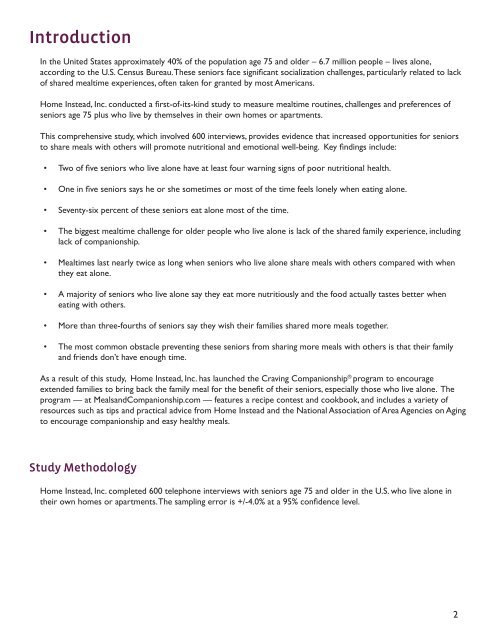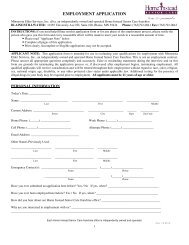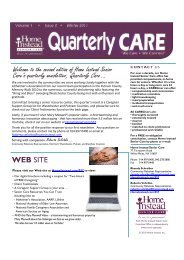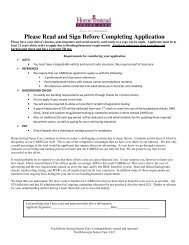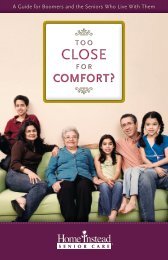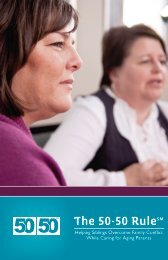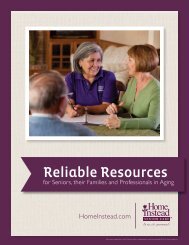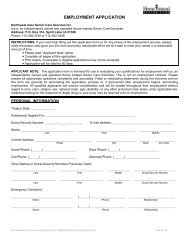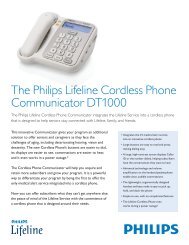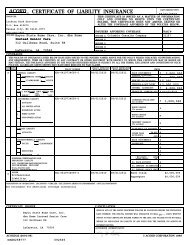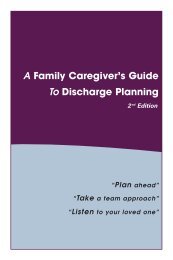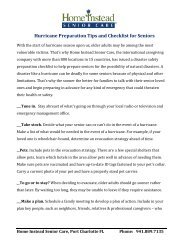Seniors and Nutrition Executive Summary - U.S. Study Results
Seniors and Nutrition Executive Summary - U.S. Study Results
Seniors and Nutrition Executive Summary - U.S. Study Results
You also want an ePaper? Increase the reach of your titles
YUMPU automatically turns print PDFs into web optimized ePapers that Google loves.
Introduction<br />
In the United States approximately 40% of the population age 75 <strong>and</strong> older – 6.7 million people – lives alone,<br />
according to the U.S. Census Bureau. These seniors face significant socialization challenges, particularly related to lack<br />
of shared mealtime experiences, often taken for granted by most Americans.<br />
Home Instead, Inc. conducted a first-of-its-kind study to measure mealtime routines, challenges <strong>and</strong> preferences of<br />
seniors age 75 plus who live by themselves in their own homes or apartments.<br />
This comprehensive study, which involved 600 interviews, provides evidence that increased opportunities for seniors<br />
to share meals with others will promote nutritional <strong>and</strong> emotional well-being. Key findings include:<br />
• Two of five seniors who live alone have at least four warning signs of poor nutritional health.<br />
• One in five seniors says he or she sometimes or most of the time feels lonely when eating alone.<br />
• Seventy-six percent of these seniors eat alone most of the time.<br />
• The biggest mealtime challenge for older people who live alone is lack of the shared family experience, including<br />
lack of companionship.<br />
• Mealtimes last nearly twice as long when seniors who live alone share meals with others compared with when<br />
they eat alone.<br />
• A majority of seniors who live alone say they eat more nutritiously <strong>and</strong> the food actually tastes better when<br />
eating with others.<br />
• More than three-fourths of seniors say they wish their families shared more meals together.<br />
• The most common obstacle preventing these seniors from sharing more meals with others is that their family<br />
<strong>and</strong> friends don’t have enough time.<br />
As a result of this study, Home Instead, Inc. has launched the Craving Companionship ® program to encourage<br />
extended families to bring back the family meal for the benefit of their seniors, especially those who live alone. The<br />
program — at Meals<strong>and</strong>Companionship.com — features a recipe contest <strong>and</strong> cookbook, <strong>and</strong> includes a variety of<br />
resources such as tips <strong>and</strong> practical advice from Home Instead <strong>and</strong> the National Association of Area Agencies on Aging<br />
to encourage companionship <strong>and</strong> easy healthy meals.<br />
<strong>Study</strong> Methodology<br />
Home Instead, Inc. completed 600 telephone interviews with seniors age 75 <strong>and</strong> older in the U.S. who live alone in<br />
their own homes or apartments. The sampling error is +/-4.0% at a 95% confidence level.<br />
2


